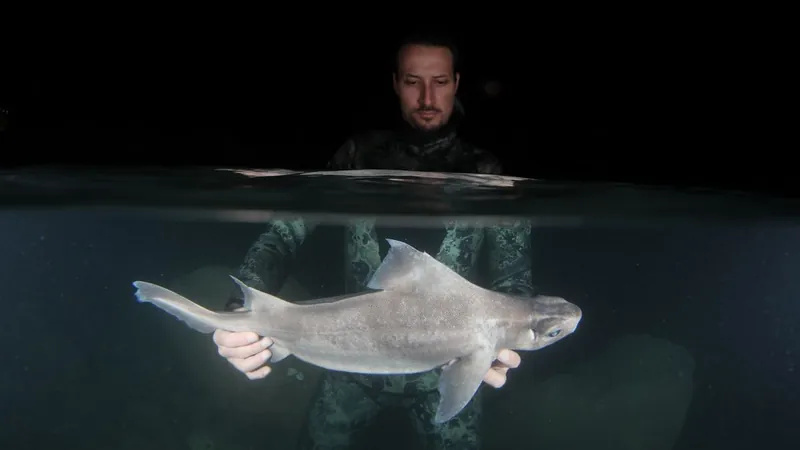
Mystifying Find: Ghostly White Shark Stuns Scientists Off the Coast of Albania
2024-11-07
Author: Sarah
Introduction
In a groundbreaking discovery, scientists have reported the sighting of an incredibly rare ghostly white shark off the coast of Albania. Caught by a commercial trawler near the remote Sazan Island—a military-controlled territory—this astonishing creature belongs to the critically endangered angular rough shark species (Oxynotus centrina).
Leucism Explained
What sets this shark apart is its leucistic condition, a unique genetic disorder that affects melanin production, resulting in strikingly reduced pigmentation. Unlike albino animals, which lack melanin entirely and possess red eyes, this leucistic shark maintains normal iris pigmentation while appearing predominantly white. According to Andrej Gajić, director of the Sharklab ADRIA in Albania, this particular shark exhibited faint whitish patches on its tail, highlighting its rare condition without compromising its overall health.
Significance of the Discovery
Published in the Journal of Fish Biology on October 16, this study marks the first documentation of leucism within angular rough sharks, as well as the first reported pigment anomaly for the entire Oxynotidae family. Typically, angular rough sharks boast dark gray-brown or black bodies, adorned with dark markings that provide excellent camouflage in their deep-sea habitats.
Survival Implications
Interestingly, while leucism can increase visibility to predators and prey, Gajić noted that the discovery suggests such pigmentation abnormalities may not significantly hinder these sharks' survival, feeding, or reproductive capabilities. In fact, this event adds to the limited record of pigment disorders—only 15 such cases documented among deep-sea sharks.
Investigating Genetic Triggers
As scientists probe deeper into the genetic triggers of leucism, potential factors for these alterations include environmental influences such as pollutants, temperature changes, hormone fluctuations, and even inbreeding in secluded populations. The quest for understanding extends to how human activities—pollution and overfishing—impact these remarkable creatures' health and susceptibility to diseases.
Shark Hotspot
The striking find was made in Vlorë, an area identified as a significant hotspot for various shark and ray species. Amazingly, this region is also home to other critically endangered species, such as little gulper sharks (Centrophorus uyato) and spiny butterfly rays (Gymnura altavela). Notably, Gajić pointed out that some of these species have not been documented in the Adriatic Sea for over a century.
Conclusion
This extraordinary discovery exemplifies the ongoing mysteries of our oceans and the importance of conservation efforts to protect these rare species from the threats posed by climate change, pollution, and unsustainable fishing practices. Stay tuned as scientists continue to unveil the secrets of the deep sea and its awe-inspiring inhabitants!





 Brasil (PT)
Brasil (PT)
 Canada (EN)
Canada (EN)
 Chile (ES)
Chile (ES)
 España (ES)
España (ES)
 France (FR)
France (FR)
 Hong Kong (EN)
Hong Kong (EN)
 Italia (IT)
Italia (IT)
 日本 (JA)
日本 (JA)
 Magyarország (HU)
Magyarország (HU)
 Norge (NO)
Norge (NO)
 Polska (PL)
Polska (PL)
 Schweiz (DE)
Schweiz (DE)
 Singapore (EN)
Singapore (EN)
 Sverige (SV)
Sverige (SV)
 Suomi (FI)
Suomi (FI)
 Türkiye (TR)
Türkiye (TR)